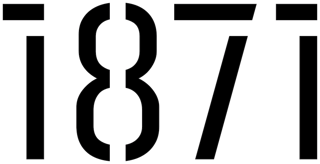Do you ever wonder how companies starting from scratch become successful? 1871 member and CEO of Digital Authority Partners Codrin Arsene sheds light on the good, the bad, and the ugly of building a multi-million dollar business. Here's the third and final segment of this three-part blog series.

Guest Author: Codrin Arsene, CEO, Digital Authority Partners
In Part 3 of this 3-part series, The Road to a Multi-Million Dollar Company: The Ugly, I discuss the challenges of starting a business that is suddenly expanding faster than planned. For some, these issues may seem simple; but I can safely say that, to me personally and to my team, the following issues have definitely been the most difficult part of managing and scaling up our business. This is in no small part due to the fact that the solutions we chose, while helpful, created their own hair-pulling, primal scream-type problems.
The Ugly
Cash Flow issues
It happens to all companies. Vendors. Providers. Manufacturers. Consulting businesses. You name it, positive cash flow is always an issue. It figures, right? Of course, after you grow your business, if margins are good enough, cash flow becomes less of an issue. For DAP, we are FINALLY at a point where our cash reserves are substantial enough that we currently do not worry about cash flow. But up until a few months ago, that cash failure wolf was ever nosing at our door. For the previous three years, cash flow was always an issue—or, better said, multiple issues.
Even though we have clear payment terms with our direct clients, it’s still difficult to get some to pay on time. Depending on the client type/size, one may be faced with either accepting significant delays in payment or walking away from the business.
The irony is - the bigger the account, the longer the payment terms.
This of course, puts young companies in a difficult position. We won’t do business with startups unless they can pay 30-50% of the services cost upfront. That’s because we have seen too many startups go broke right before our eyes. Fortunately, in 2 years and with over 150 projects completed, we’ve only had one client completely fail to pay us.
However, when dealing with large clients and statements of work in excess of $250,000, negotiating favorable payment terms (where favorable in our book = 30 days) is often difficult to achieve. And we are definitely not in a position to make the same 30-50% demand from these companies that we do with startups.
Bottomline: When you have payment terms ranging from 30 to 90 days, or even 120 days, you are bound to deal with serious cash flow issues.
Delivery partner for another agency: an eternal blessing (with a caveat)
One strategy that helped us deal with this issue was to sell our accounts receivable. This method generally works well, and at low rates, when dealing with companies with great reputations. Unfortunately, this is not always possible. Which brings us to another factor affecting our cash flow: agency partnerships.
To be clear, getting business through our partners is an enormous asset—one that we cannot overstate. Yet, just as we have to wait for our direct clients to pay us, our partners have to wait for their clients to pay them. Usually, agencies pay us within 1-2 weeks after their direct clients pay them, adding another 2 weeks to the 30/60/90/120 day payment terms our partners have with their clients. We’ve also discovered that it is infinitely more difficult to sell your accounts receivable when your statement of work is done with an agency versus an end client.
To illustrate: we have a very large client who brought us more than half a million dollars last year. However, our statement of work is with another company. When we tried to sell our accounts receivable against the standard 3-4% rate that we had previously seen, our financial partners suddenly declined to help us because the agency in question did not have the same credit worthiness as the actual client paying the bill.
These are the tips of a few icebergs in our many cash flow issues. Of course, for a long time, cash flow issues such as these were a very bittersweet issue. We only had cash flow issues because we were working on amazing projects with substantial scope and monetary benefits. However, now that these issues are well resolved, I cannot begin express how relieved I am.
Getting new clients
For any consulting company, winning new clients is always a challenge. The stars need to perfectly align if you are to adequately fulfill the ongoing need to acquire new (and maintain existing) clients. The process works most smoothly when:
- The prospective client has a clearly defined need
- Both the prospective client and your agency believe you can 100% fulfill that need
- Your price list/quote is exactly right
Those are the obvious requirements. Unfortunately, other factors complicate the equation.
- Clients don't tend to post their requirements online. Most clients come from cold calls.
- If potential clients have a defined need, they usually first go to their own networks to find resources versus opening contracts up for bid (exception, of course, is government contracts where bids are always public and usually required).
- Many prospective clients try to leverage internal solutions and resources even if they’re not as skilled as outside vendors.
- Some prospective clients severely underestimate the time/effort needed for a project and after receiving quotes from vendors decide to wait for the next budget period before re-engaging the discussion.
Sometimes you might be hired even though you are only able to fulfill part of a client’s need; another company will be hired to complete the work that is outside your expertise/comfort level. However, as any consultant can testify, even though you may be the best candidate in the world for 50% of the work, the client may still hire a different agency, simply for the convenience of dealing with one party who claims it can do everything needed rather than two companies who can each only do half of the work.
We recently experienced this exact situation and lost a client who wanted a partner to perform end-to-end digital strategy, design and development for an IoT product, including related hardware development. The client told us we had the best software proposal he had ever seen. Even so, his team decided to go with a company that could do both.
So, getting new clients demands constant networking, a-full time sales team, a combination of cold calls, SEM strategy, SEO strategy and Linkedin research (you’d be surprised by how many direct sales we get by data mining Linkedin and connecting with random executives posting on the platform about their needs!).
This is a hard business. It is decidedly not about instant gratification. Sure, on occasion (especially with inbound leads) the stars do align and a contract is signed within 2-3 weeks of the first touch point. More often though, 7-8 months may pass from the first interaction until the time a contract is signed. This, of course, affects all other issues a company may be facing (e.g., cash flow, low ability to predict new business, downtimes, etc).
Setting the right price
Determining the perfect price is a major recurring issue besetting any consulting company. Our goal is to ensure that the scope is set in stone and based on our original hourly estimate, plus a standard margin of profit. However, the goal of every client is to get as much value as possible from a fixed bid project and, preferably, even more than was agreed to in the original statement of work. We are performing a waltz, but the dancers are not always hearing the same music.
When defining a strategy, we make a series of assumptions about the project and clearly describe them in our statement of work. However, while doing the actual work it is not uncommon to learn new, unexpected elements that change the overall scope of work. One way other companies deal with this issue is by burying the findings in order to remain within the original scope. We have never done that. If we find something we strongly believe will have an impact on the business, we simply do things the right away to build the best possible product.
Of course, when negotiating a contract, everyone is on their best behavior. When work actually gets started, however, it’s not uncommon to learn you are dealing with clients who are different than what you were originally led to believe. This translates into more iterations for the client than you expected, costing you more money. The simple reality is that virtually nothing in your estimate will actually be “right on the money.”
Some of our projects yielded a 90% profit margin because the client was so easy to work with or because we simply “got it” right the first time, beginning-to-end. We’ve also had projects that put us at cost or in the negative. Overall, across all clients, we actually met our margin and profit goals in 2017. Without a doubt, it was a real rollercoaster ride with virtually anything from 30% losses to a 91% margin of profit.
The lesson from: Do your best to estimate correctly and hope your best is good enough to keep you solvent.
Diplomacy when saying ‘No’
We are a value adding partner for our clients. It’s worth writing that sentence again: We are a value adding partner.
We are not in business to do exactly what clients want in the way that they want it done. Our clients pay for our expertise in tackling their biggest problems in the process of finding the best solutions that will set them up for success. Since over 90% of our clients have had more than one statement of work with us after our original engagement, it is clear they respect our philosophy and practical applications. However, by virtue of what we do - helping companies define and execute complex omnichannel projects and marketing campaigns - we are basically in the business of telling clients ‘no’.
Here are some of the “no’s” we have given clients in just one month:
- Your app or web idea isn’t good in its current form
- Your monetization model will fail for A/B/C reason
- Your desired customers will not pay X dollars, or anything, for your solution
- The user experience you’ve built in-house is not good enough for launch
- Your current marketing plan is defined for the wrong audience
- You are trying to make your app do too many things at once (you may be the jack of all trades, but you are the master of none).
- Your UX is good, but your color scheme will not resonate with your ideal target audience
- Your cost of acquisition will be too high if you go to production in the current state
- Your current branding is confusing and won’t result in conversion
- You’ve built an app with limited chances for returning or repeat visitors
- You have a great product but you’re focusing on absolutely the wrong audience
Of course, we always try to be very sensitive about the way in which we state that one thing or another is not conducive to meeting our clients’ business goals. Since we do it professionally and compassionately, they listen to what we have to say. In the back of their minds they remember they hired us to tell them these things. Still, there is no guarantee they will take criticism well or that they will follow our advice. Diplomacy can fail.
Times we have had to forcefully tell clients ‘no’, include: drastic changes in scope after the contract is signed, an unreasonable number of change requests, asking for a project to be executed within a physically impossible timeframe (no, we cannot do an end-to-end mobile responsive website with brand copy and design in 3 days!).
Sometimes, one also deals with clients who simply won’t take ‘no’ for an answer. That, in turn, has an impact on profitability and sometimes even the relationship with the client. Diplomacy has limitations, even after the contract is signed! Young companies have to simply ‘suck up’ these differences because they need the money. Ultimately, one might be better off to cut the loss and move to the next project, simply because of the drain on the team. Working with businesses who hire an expert but then refuse to accept the expert’s expertise cause companies to pay a high price in both bottom line and morale.
For multiple reasons, in consulting, you have to tell people ‘no’. You’re never the popular guy on the block. And no matter how often you do it or how nicely you phrase it, saying ‘no’ never gets easier.
Last Words
So here we are at the million dollar-plus mark in much less time than any of us would have imagined. Although my partners and I are far more seasoned than we were at the beginning of this project, we undoubtedly have much more to learn. Achieving such success has taken discipline, an insane amount of determination and luck (in that order).
As you might expect, most elements in building a cohesive company with high integrity involve human-related factors: staff of sterling character and abilities, relations within the company and relationships with clients. Positioning the puzzle pieces of staffing, client relations, and office management, while keeping team morale and the long term picture in mind was fraught with worry, fear and exhaustion. There was also enough delight and success to keep us all motivated. Along the way, we have learned invaluable lessons in business and in life, and have acquired matching levels of confidence and humility.
Over the last three years I was anxious about our ability to successfully launch a product due to time crunches, resourcing issues and more. There were times I was sure we couldn’t pay our employees. Certainly, there were times I was sure we would fail. My sole purpose in candidly presenting our story is to give you the reassurance I so often wished for in this process. I hope my experience gives you an example that helps inspire you to start, or keep going down, your own road to business success.
The business world is highly competitive, and the road to success definitely will not be easy or simple. However, as numerous business success books carrying the title There’s Always Room at the Top!, or some variation of that point out, there is always room for excellence.
The writers of these books often point out the need for, and their appreciation of, encouragement from others, even though they had great personal drive in their rise to the top of their fields. I wish people - and other writers specific to my industry - would have conveyed the simple message I now offer to you: No matter how hard you have to work or how chaotic the stages in your company’s growth are, with the right crew, you can succeed in building a successful company. Draining, all-consuming effort is required, but you can succeed. No matter how challenging any stage appears to be, if you are consistently making some sort of forward progress, regardless of how small it may appear to be, don’t give up. There’s nothing more exhilarating in life than to hustle your way from zero to a multi-million dollar company. It’s worth every sacrifice you need to make!
About the Author
Codrin Arsene runs Digital Authority Partners, a digital strategy and product development company headquartered in Chicago, Il. Originally from Romania, Codrin received a full scholarship to attend the University of Chicago, where he received both his bachelor's degree (with honors) and his master's degree. After working in corporate America for several years, Codrin saw that many companies under delivered on their digital initiatives. He founded Digital Authority Partners to help startups and enterprises adopt new and exciting technologies to solve complex problems. Digital Authority specializes in today's most critical business needs, including: AI, digital strategy, product development, UX/design, and analytics.
As more and more businesses have begun to realize the importance of digital transformation in their quest to stay relevant, Digital Authority Partners has expanded into a multi-million dollar business. Codrin loves helping companies succeed, and lives his life according to Floyd Mayweather's famous quote: "A true champion can adapt to anything."
The opinions expressed here by 1871 guest writers are their own, not those of 1871. To learn more about Digital Authority Partners and how you can build a successful business, follow this link.


